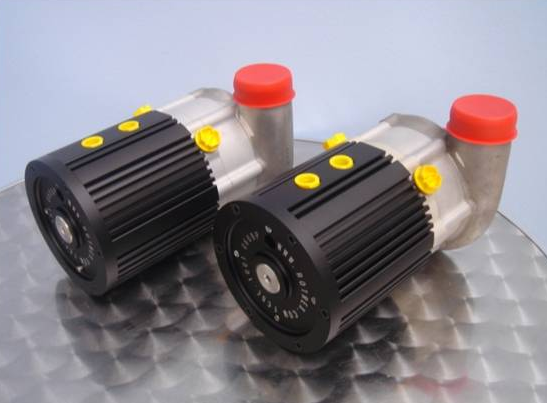For something that could revolutionize the world, it's come along very slowly. The fuel cell was invented in 1839, but there was little development until the 1950s when NASA started to use them in space where they are still used today. Now, after years of continuous development, things are speeding up. At its core, the fuel cell is very simple. It uses hydrogen, the most abundant element in the universe, as fuel. One type of fuel cell uses a membrane and it looks something like plastic wrap.
有一個東西能讓世界發生變革,但同時它也來之不易。燃料電池發明于1839年,但直到20世紀50年代才略有起色,因為當時美國宇航局在太空里啟用燃料電池,直到今天也依然沿用著這種用途。如今,在經過多年來連續的發展后,事物的發展速度更快了。燃料電池的核心原理很簡單。它將氫氣這個宇宙里含量最豐富的元素作為燃料。還有一種燃料電池會用到膜,這讓它看起來塑料包裹膜一樣。
It allows the hydrogen's proton to pass through while the electron is forced to take a different course. This produces electricity. The fuel cell runs as long as it's fed hydrogen. The cleanest, the most readily available source of hydrogen is very easy to find. It's water. Of course, it couldn't be this simple. Somehow, the hydrogen in the water molecule must be stripped and stored, and that takes power. Peter Lehman at Humboldt State University in Northern California decided to build a renewable hydrogen fuel cell system for a research aquarium.

I think the legacy of the 20th century is that we were very good at burning things. Fuel cells offer a clean and efficient way to generate electricity. They are totally pollution-free and they are significantly more efficient than traditional ways of generating electricity. He bought solar panels to provide power to remove the hydrogen from water and tanks to store the hydrogen fuel. The problem was the fuel cell. No one produced one that would work with the aquarium.
So Peter went ahead and built it. During the day, it uses power from the solar panels, but only part of that power. The rest is turned into hydrogen for use later by the fuel cell. That creates a completely renewable full-time system. The goal of fuel cell makers is to offer totally reliable, independent systems, but the competition is tough. To thrive in the marketplace, fuel cell makers must compete against the cheap and reliable power provided by fossil fuels. Peter's reliable fuel cell system has already satisfied customers who are off the power grid. Now, he's ready to convince the rest of us.











